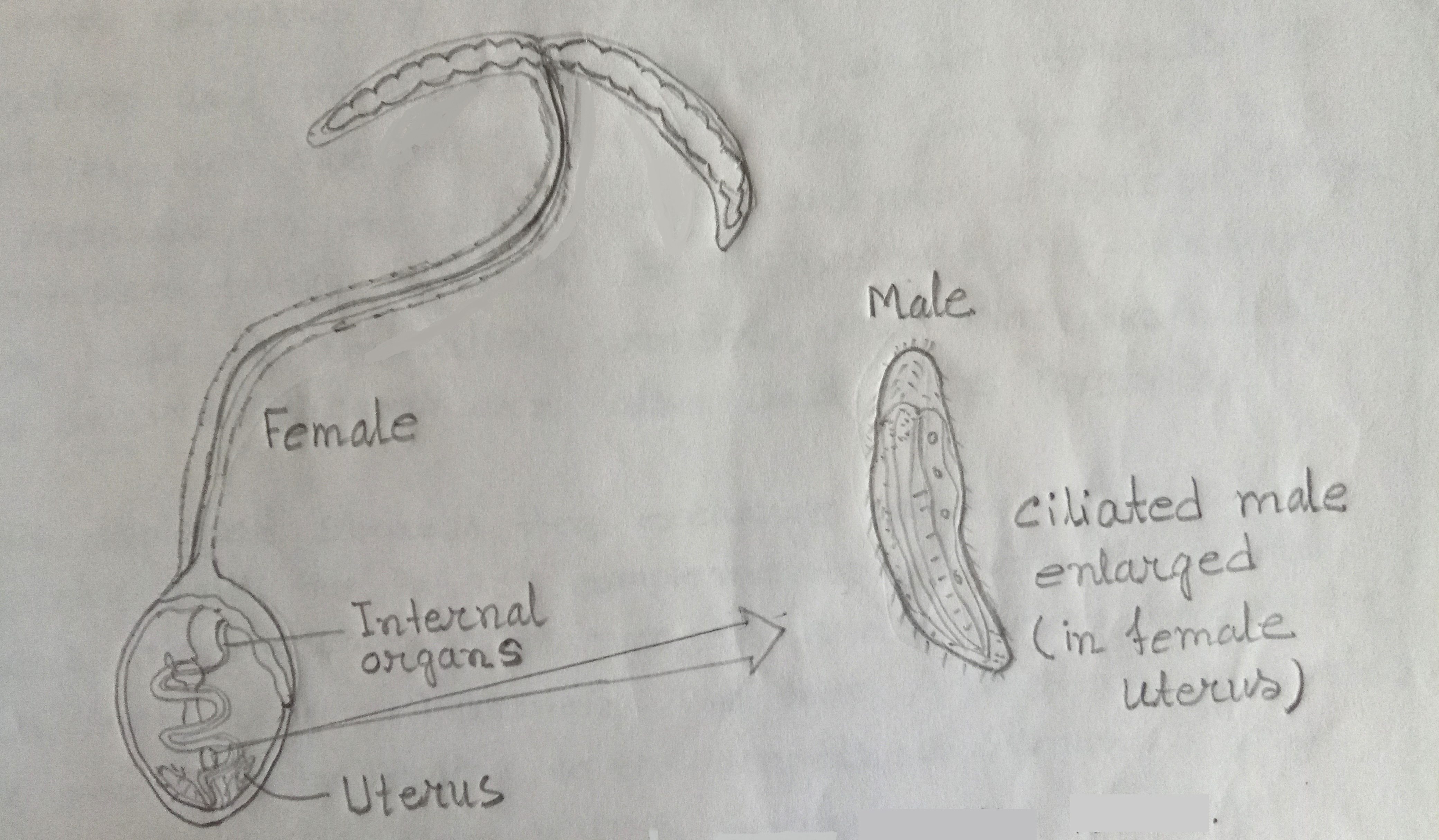Describe with appropriate examples the role of environment in the determination of sex
The role of environment in the determination of sex:
In some lower organisms, though the genetic determiners of the sex are present, the ambient environment plays a decisive role in the development of a particular sex type. And it appears that sex determination is non-genetic. The males & females have similar genotype, but stimuli from environmental factors initiate development to words one sex or the other. In Equisetum plant, for example, female characteristics develop when the plant is raised under favourable growth conditions, while in poor or unfavourable conditions males are formed.
Another salient example is the marine worm Bonellia. These worms are very small. The males remain in a highly reduced form in the reproductive tract of the female. The female is many times larger than the male. Any young worm reared from a single isolated egg becomes a female. If the newly hatched worms are released into water containing mature females, some young worms are attracted to females & become attached to the female proboscis. These are then transformed into males & these migrate to the female productive tract, where they become parasitic.

Fig: The female & male of the marine worm Bonellia Viridis
Environmental factors play in the production of trails in animals. Environmental factors such as diet, temperature, oxygen levels, humidity, light & the presence of mutagens can all impact which of an animal's genes are expressed. Which ultimately affects the animal's phenotype. The genetics of model organisms usually seek to minimise environmental influence by maintaining constant environmental conditions for the organisms. Genetically identical organisms exposed to controlled experimental conditions can have different phenotypes. Pointing to the power of subtle environmental differences on gene expression.